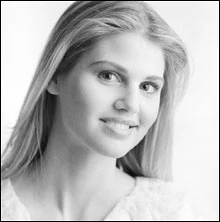What Does Facial Harmony Mean?

In the absence of facial harmony, the face is not initially viewed as a balanced unit. Instead, attention is drawn to the disproportionate parts of the face. This can be dark or misaligned teeth, spaces, gummy smiles, as well as disproportionate facial structures, such as lips, nose, and eyes in their relationship to each other and other facial features.
The concept of beauty has most often been connected to harmony and harmonic proportions. The term "proportion" implies a mathematical expression of beauty.
While beauty cannot be measured, harmony - which is most often associated with beauty - can be expressed in formulas. Disregarding ornamentation such as make-up and hair style, facial harmony can be calculated according to such formulas, dictating a sort of a blueprint for the ideal human face.
Recent studies on the best-paid magazine models revealed the current ideal of facial aesthetics: A slightly protruding mouth profile, clear outline of bony structure, permanent display of upper teeth, short upper lip and, quite naturally, a seductive smile. Many of us are taught to believe that this ideal is out of reach. But the truth is that Aesthetic Dentistry can help us attain it.
The satisfactory division of a surface into parts that are different in shape and size yet are related to each other is called repeated ratio. The most significant repeated ratio in history is the "Golden Proportion (Golden Rules)".
Golden Proportions have been created for more than 2000 years in art and architecture. They can be found in the pyramids and Gothic cathedrals, as well as in Greek art and the works of Leonardo da Vinci.
Why do teeth and facial structures have to conform to the "Golden Rules" to be perceived as attractive or beautiful?
Facial structures may have other than "Golden" proportions and still be favorably perceived. This all may depend on the effect of individual shapes, the tension resulting from the integration of the various forms, and the specific characteristics of perception. However, sooner or later, at any given distance, attention will be given to general proportions, when the presence of "golden" relationships is perceived as harmony and structural beauty.
A very valuable resource of information is the book "Fundamentals of Esthetics" by Dr. Claude R. Rufenacht. Especially the chapter about aesthetic principles, such as dental, dento-facial, and facial composition are an excellent effort to organize and structure the subject of facial aesthetics and facial harmony. Dr. Rufenacht talks about aesthetic elements, such as cohesive and segregative forces as they apply to the human face, smile, and dentition. He then moves on discussing morpho-psychologic interpretation and its relationship to the evaluation of human beauty.
The creation of such a broader aesthetic framework establishes a point of reference that is exterior to oral aesthetics and smiles. This is important. An approach coming from the big picture towards the individual elements via aesthetic and functiona levels facilitates the holistic integration of a new smile.


